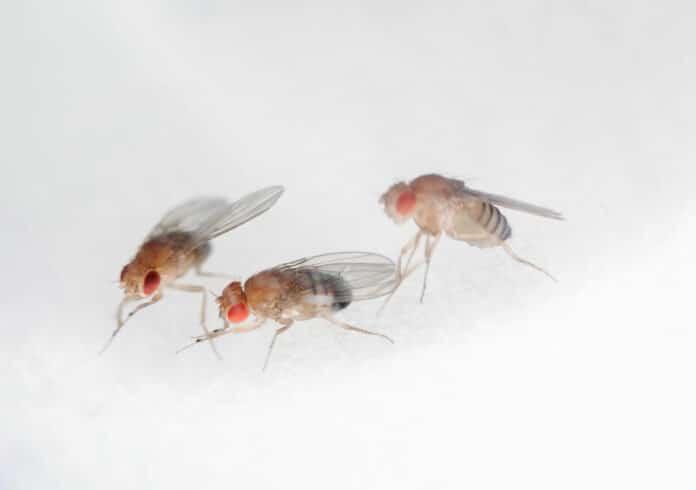Several studies have suggested that spaceflight risks the central nervous system (CNS) and other complex health effects. However, artificial gravity appears to offer some protection from these changes, according to recent results from a study conducted on the International Space Station using fruit flies.
Fruit flies are the ideal organism for this kind of research due to their similarities to humans. There’s a significant overlap between the cellular and molecular processes of flies and humans. Almost 75% of the genes that cause human disease are shared by fruit flies, meaning the more we learn about fruit flies, the more information scientists have to investigate how the space environment may impact human health.
In this experiment, scientists flew flies to the space station for a month in a newly developed piece of hardware known as the Multi-use Variable-gravity Platform (MVP), which can hold flies in various degrees of gravity. The flies in this hardware had access to fresh food as they lived and reproduced. By using distinct compartments, the MVP allowed for different generations of flies to be separated.
A centrifuge, a device that spins to replicate gravity, was used to simulate Earth’s gravity for another group, exposing them to artificial gravity. Cameras in the hardware captured these “flyonauts'” behavior while they were on the space station. Some frozen flies were brought back to Earth to investigate their gene expression.
The flies were flown back to Ames for additional research when they returned to Earth in a SpaceX Dragon spaceship that splashed down in the Pacific Ocean. After the flies arrived, researchers at Ames worked nonstop for two days to sort them and evaluate their behavior and biochemistry. The same analyses were run on a set of flies kept on Earth as a control experiment to provide a baseline to compare the data from the “flyonauts.”
This is the first of its kind of study that takes an integrated approach to how the space environment impacts the nervous system. Scientists observed flies behavior by observing their movements as they moved about in their habitat, changes at the cellular level in the fly brain, how gene expression modifications impact the nervous system, and more.
Scientists noted, “Observed changes came in many forms, some easy to see simply by looking at the cameras included in the MVP’s compartments, others that required further study on the return to Earth. The behaviors studied included inflight fly activity and climbing ability upon return to Earth. Flies have a natural response to climb up their container when tapped down, and this was used as a test of their abilities post-flight. Flies in microgravity were more active than those in the artificial Earth gravity, but also showed difficulty during this climbing test after returning to Earth.”
Neurological abnormalities in flies exposed to microgravity were discovered by a more thorough study performed right after landing. After returning to Earth, the flies aged differently depending on whether they had used artificial gravity while in space. They confronted difficulties similar to the flies in microgravity, although less severe.
The results from this study suggest that spaceflight causes stress in the fly’s cells that lead to negative behavioral and neurological impacts, as well as changes in gene expression in the fly’s brain. However, artificial gravity can temporarily relieve the difficulties microgravity in space causes on the nervous system of a fruit fly, even if there are still long-term health complications.
Dr. Siddhita Mhatre, a KBR Wyle senior scientist at Ames and an author of the published paper, said, “Because fruit flies and humans are very different organisms, despite their genetic overlaps, these results can’t speak directly to what humans will experience over a lifetime in space—but it paves the way for scientists to follow up when designing ways to protect astronauts as they travel to destinations with a variety of gravity levels in the future.”
“With the upcoming long-duration deep space missions, where astronauts will be exposed to varying levels of gravity, it is imperative that we understand the impacts of altered gravity on neurological function. If we can use artificial gravity to delay space-related deficits, maybe we can extend the future mission timelines. And flies in space, alongside the astronauts, will help to further our efforts in keeping astronauts healthy.”
Journal Reference:
- Siddhita D. Mhatre et al., Artificial gravity partially protects space-induced neurological deficits in Drosophila melanogaster, Cell Reports (2022). DOI: 10.1016/j.celrep.2022.111279
